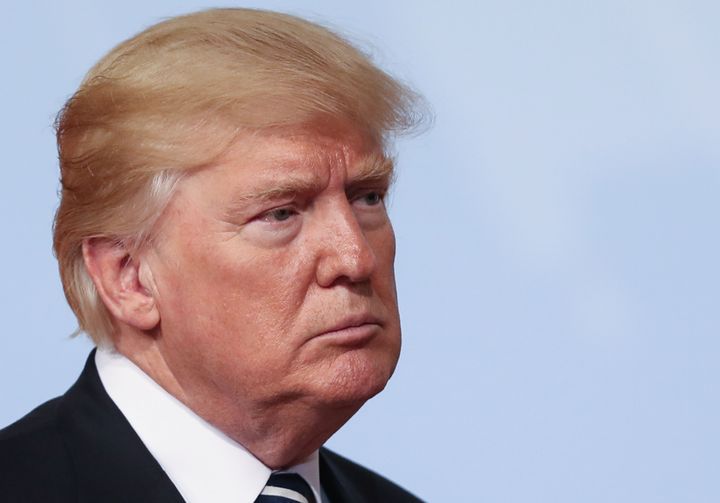
Donald Trump was condemned by Republican politicians on Wednesday after he doubled down on his earlier statement that “many sides” were to blame for violence at a far-right rally in Charlottesville - but his stance shouldn’t come as a surprise to anyone.
On Monday, the president finally condemned white supremacists, calling them “criminals and thugs” after a rally on Saturday descended into chaos that led to the death of Heather Heyer.
But speaking at Trump Tower last night, Trump softened his stance somewhat, saying both sides were to blame which led to senior Republican’s, including John McCain, condemning his remarks. They were, however, well received by the likes of former KKK leader David Duke and other white supremacists.
But as the HuffPost’s Jeffrey Young pointed out last year, Republican’s have know Trump’s stance on race issues all along.
“You heard every terrible thing he said. You watched every inexcusable thing he did,” Young wrote.
“You knew Trump is a race-baiting, xenophobic, misogynistic, authoritarian con man. You knew about his insatiable appetite for power, his bottomless need for affirmation, his dangerous impulsiveness and uncontrollable temper.
“You knew he was a huckster who ruined businesses and lives. You knew he debased your party, and you personally. You knew.”
If you need any proof that Young’s blunt assessment was on the money, take a look at these Trump examples of racism below which come from an article written by Lydia O’Connor and Daniel Marans for HuffPost.
1. Some of his top advisers and cabinet picks have histories of prejudice
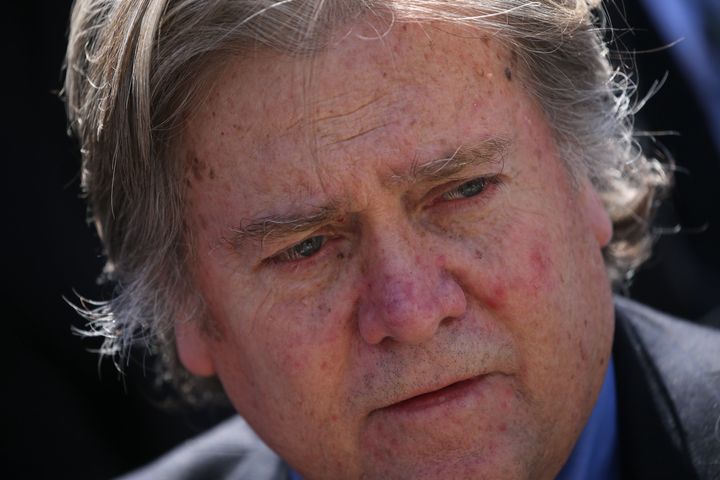
Since winning the election, Trump has picked top advisers and cabinet officials whose careers are chequered by accusations of racially-biased behaviour.
Trump’s chief strategist and senior counsellor Steve Bannon was executive chairman of Breitbart, a news site that Bannon dubbed the “home of the alt-right”.
Under Bannon’s leadership, Breitbart increased its accommodation of openly racist and anti-Semitic writing, capitalising on the rise of white nationalism prompted by Trump’s campaign.
Retired Lieutenant General Mike Flynn, who worked as Trump’s national security adviser until it was revealed he had discussed US sanctions against Russia with that country’s ambassador, has drawn scrutiny for anti-Muslim comments he has made over the years.
In February, Flynn tweeted that “fear of Muslims is rational”. Over the summer, he said that there is a “diseased component inside the Islamic world” that is like a “cancer.”
Flynn has defended Trump’s past proposal of banning Muslim immigration and suggested he would be open to reviving torture techniques like waterboarding.
In addition, Trump has nominated Jeff Sessions to be attorney general of the United States. The Senate refused to confirm Sessions as a federal judge in 1986 amid accusations that he’d made racially insensitive comments, including that the only reason he hadn’t joined the Ku Klux Klan was because members of the extremist group smoked marijuana.
Civil rights groups condemned Trump’s nomination of Sessions, while leading white nationalists celebrated it.
And Steve Mnuchin, who Trump tapped to serve as Treasury secretary, faces allegations of profiting from racial discrimination. As a hedge fund manager, Mnuchin purchased a troubled mortgage bank, sped up its foreclosure rate and sold it for a killing several years later.
Along the way, Mnuchin’s bank came under fire from housing rights groups for racist practices like lending to very few people of colour and maintaining foreclosed-upon properties in neighbourhoods that were predominantly black and brown less than in white neighbourhoods.
2. Trump denied responsibility for the racist incidents that followed his election

Despite the wave of hate speech and racist violence following Trump’s election, the president has repeatedly downplayed the incidents and half-heartedly denounced them.
There were nearly 900 hate incidents across the US in the 10 days following the election, a report released last month by the Southern Poverty Law Center found.
Those attacks include vandals drawing swastikas on a synagogue, schools, cars and driveways; an assailant beating a gay man while saying the “president says we can kill all you faggots now”; and children telling their black classmates to sit in the back of the school bus.
In nearly 40 percent of those incidents, the SPLC found, people explicitly invoked the president-elect’s name or his campaign slogans.
The Council on American-Islamic Relations and the Anti-Defamation League have also tracked significant growth in racist and bigoted attacks.
“We’ve seen a great deal of really troubling stuff in the last week, a spike in harassment, a spike in vandalism, physical assaults. Something is happening that was not happening before,” ADL national director Jonathan Greenblatt told The New Yorker.
Despite these findings, Trump insisted on CBS’ “60 Minutes” the Sunday after his election that there had only been “a very small amount” of racist incidents.
“I am so saddened to hear that,” Trump said when asked about the racist incidents. “And I say, ‘Stop it.’ If it helps, I will say this, and I will say right to the camera: ‘Stop it.’”
He also accused the media of overstating the attacks.
“I think it’s built up by the press because, frankly, they’ll take every single little incident that they can find in this country, which could’ve been there before ― if I weren’t even around doing this ― and they’ll make it into an event, because that’s the way the press is,” he said.
3. He launched a travel ban targeting Muslims
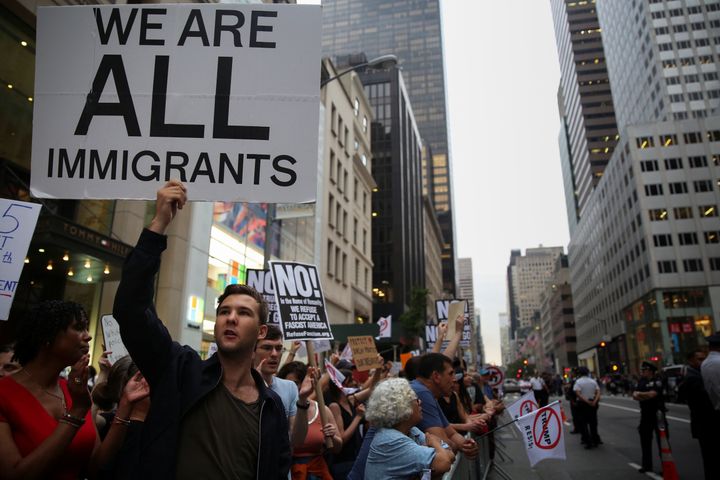
In an executive order since blocked by the courts, Trump restricted Syrian refugees and travel by immigrants from seven Muslim-majority countries.
While then White House press secretary Sean Spicer later insisted that it was “not a Muslim ban,” Trump said the day he signed it that he would prioritise helping Syrian Christians and made an exception for admitting refugees who are religious minorities in those countries.
Trump has characterised people from that region of the world as being “terror-prone,” despite there having been zero fatal terrorist attacks on US soil since 1975 by immigrants from the seven targeted countries: Iran, Iraq, Libya, Somalia, Sudan, Syria and Yemen.
A blanket ban on travel from those countries and anti-Muslim bigotry in general is “essentially an extension of the fear and vilification of not only Muslims but everyone perceived to be Muslim that’s been taking place for centuries,” Khaled Beydoun, a law professor at the University of Detroit told Vox.
4. He attacked Muslim Gold Star parents
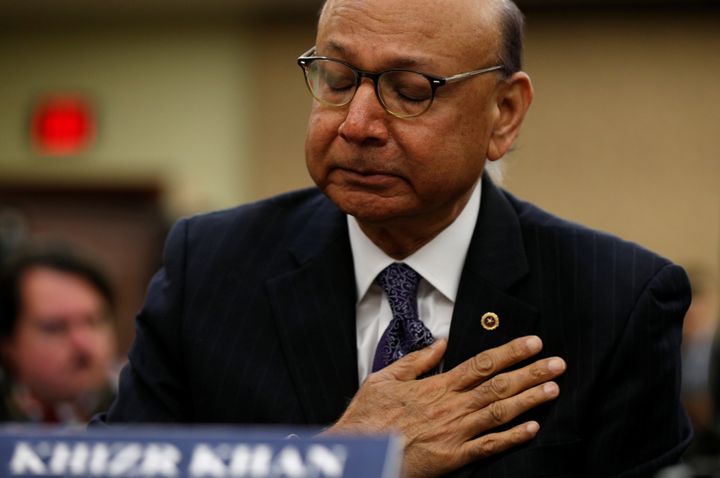
Trump’s retaliation against the parents of a Muslim US Army officer who died while serving in the Iraq War was a low point in a campaign full of hateful rhetoric.
Khizr Khan, the father of the late Army Captain Humayun Khan, spoke out against Trump’s bigoted rhetoric and disregard for civil liberties at the Democratic National Convention on July 28. It became the most memorable moment of the convention.
“Let me ask you, have you even read the US Constitution?” Khan asked Trump before pulling a copy of the document from his jacket pocket and holding it up. “I will gladly lend you my copy.”
Khan’s wife, Ghazala, who wears a head scarf, stood at his side during the speech but did not speak.
In response to the devastating speech, Trump seized on Ghazala Khan’s silence to imply that she was forbidden from speaking due to the couple’s Islamic faith.
“If you look at his wife, she was standing there. She had nothing to say. She probably, maybe she wasn’t allowed to have anything to say. You tell me,” Trump said in an interview with ABC News.
Ghazala Khan explained in an op-ed in The Washington Post the following day that she could not speak because of her grief.
“Walking onto the convention stage, with a huge picture of my son behind me, I could hardly control myself. What mother could?” she wrote. “Donald Trump has children whom he loves. Does he really need to wonder why I did not speak?”
5. He claimed a judge was biased because “he’s a Mexican”
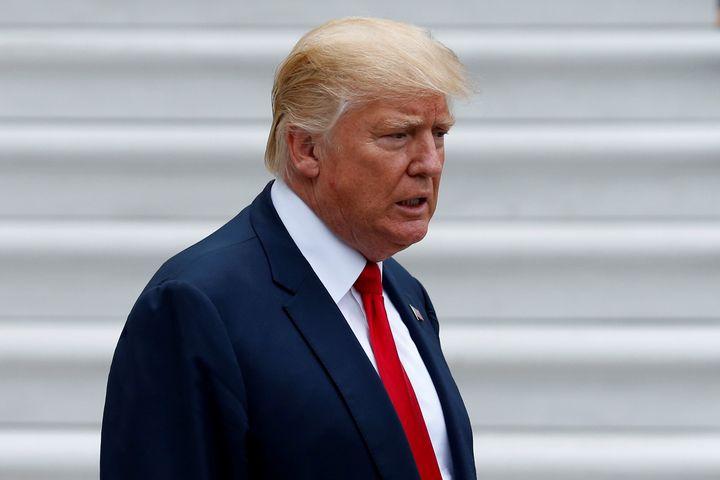
In May 2016, Trump implied that Gonzalo Curiel, the federal judge presiding over a class action suit against the for-profit Trump University, could not fairly hear the case because of his Mexican heritage.
“He’s a Mexican,” Trump told CNN. “We’re building a wall between here and Mexico. The answer is, he is giving us very unfair rulings — rulings that people can’t even believe.”
Curiel, it should be noted, is an American citizen who was born in Indiana. As a prosecutor in the late 1990s, he went after Mexican drug cartels, making him a target for assassination by a Tijuana drug lord.
Even members of Trump’s own party slammed the racist remarks.
“Claiming a person can’t do their job because of their race is sort of like the textbook definition of a racist comment,” House Speaker Paul Ryan said, though he clarified that he still endorsed Trump.
The comments against Curiel didn’t sit well with the American public either. According to a YouGov poll released in June 2016, 51 percent of those surveyed agreed that Trump’s comments were not only wrong, but also racist.
6. The Justice Department sued his company ― twice ― for not renting to black people

When Trump was serving as the president of his family’s real estate company, the Trump Management Corporation, in 1973, the Justice Department sued the company for alleged racial discrimination against black people looking to rent apartments in the Brooklyn, Queens and Staten Island.
The lawsuit charged that the company quoted different rental terms and conditions to black rental candidates than it did to white candidates, and that the company lied to black applicants about apartments not being available.
Trump called those accusations “absolutely ridiculous” and sued the Justice Department for $100 million in damages for defamation.
Without admitting wrongdoing, the Trump Management Corporation settled the original lawsuit two years later and promised not to discriminate against black people, Puerto Ricans or other minorities.
Trump also agreed to send weekly vacancy lists for his 15,000 apartments to the New York Urban League, a civil rights group, and to allow the NYUL to present qualified applicants for vacancies in certain Trump properties.
Just three years after that, the Justice Department sued the Trump Management Corporation again for allegedly discriminating against black applicants by telling them apartments weren’t available.
7. In fact, discrimination against black people has been a pattern throughout Trump’s career

Workers at Trump’s casinos in Atlantic City, New Jersey, have accused him of racism.
The New Jersey Casino Control Commission fined the Trump Plaza Hotel and Casino $200,000 in 1992 because managers would remove African-American card dealers at the request of a certain big-spending gambler. A state appeals court upheld the fine.
The first-person account of at least one black Trump casino employee in Atlantic City suggests the racist practices were consistent with Trump’s personal behavior toward black workers.
“When Donald and Ivana came to the casino, the bosses would order all the black people off the floor,” Kip Brown, a former employee at Trump’s Castle, told The New Yorker for a 2015 article. “It was the eighties, I was a teen-ager, but I remember it: they put us all in the back.”
Trump allegedly disparaged his black casino employees as “lazy” in vividly bigoted terms, according to a 1991 book by John O’Donnell, a former president of Trump Plaza Hotel and Casino.
“And isn’t it funny. I’ve got black accountants at Trump Castle and Trump Plaza. Black guys counting my money! I hate it,” O’Donnell recalled Trump saying. “The only kind of people I want counting my money are short guys that wear yarmulkes every day.”
“I think the guy is lazy,” Trump said of a black employee, according to O’Donnell. “And it’s probably not his fault because laziness is a trait in blacks. It really is, I believe that. It’s not anything they can control.”
Trump told an interviewer in 1997 that “the stuff O’Donnell wrote about me is probably true,” but in 1999 accused O’Donnell of having fabricated the quotes.
Trump has also faced charges of reneging on commitments to hire black people. In 1996, 20 African-Americans in Indiana sued Trump for failing to honor a promise to hire mostly minority workers for a riverboat casino on Lake Michigan.
8. He refused to immediately condemn the white supremacists who advocated for him
Trump’s response to the Charlottesville chaos wasn’t the first time he appeared hesitant to condemn white supremacists.
Three times in a row on February 28, Trump sidestepped opportunities to renounce white nationalist and former KKK leader David Duke, who’d recently told his radio audience that voting for any candidate other than Trump would be “treason to your heritage”.
When asked by CNN’s Jake Tapper if he would condemn Duke and say he didn’t want a vote from him or any other white supremacists, Trump claimed that he didn’t know anything about white supremacists or about Duke himself.
When Tapper pressed him twice more, Trump said he couldn’t condemn a group he hadn’t yet researched.
By February 29, Trump was saying that in fact he did disavow Duke, and that the only reason he didn’t do so on CNN was because of a “lousy earpiece”.
Video of the exchange, however, shows Trump responding quickly to Tapper’s questions with no apparent difficulty in hearing.
It’s preposterous to think that Trump didn’t know about white supremacist groups or their sometimes violent support of him. Reports of neo-Nazi groups rallying around Trump go back as far as August 2015.
His white supremacist fan club includes The Daily Stormer, a leading neo-Nazi news site, Richard Spencer, director of the National Policy Institute which aims to promote the “heritage, identity, and future of European people” and Jared Taylor, editor of American Renaissance, a Virginia-based white nationalist magazine.
Michael Hill, head of the League of the South, an Alabama-based white supremacist secessionist group, and Brad Griffin, a member of Hill’s League of the South and author of the popular white supremacist blog Hunter Wallace are also said to be fans.
A leader of the Virginia KKK who backed Trump told a local TV reporter in May, “The reason a lot of Klan members like Donald Trump is because a lot of what he believes, we believe in.”
Later that month, the Trump campaign announced that one of its California primary delegates was William Johnson, chair of the white nationalist American Freedom Party. The Trump campaign subsequently said his inclusion was a mistake, and Johnson withdrew his name at their request.
After the election, Spencer’s National Policy Institute held a celebratory gathering in Washington, DC. A video shows many of the white nationalists assembled there doing the Nazi salute after Spencer declared, “Hail Trump, hail our people, hail victory!”
9. He questioned whether President Barack Obama was born in the United States
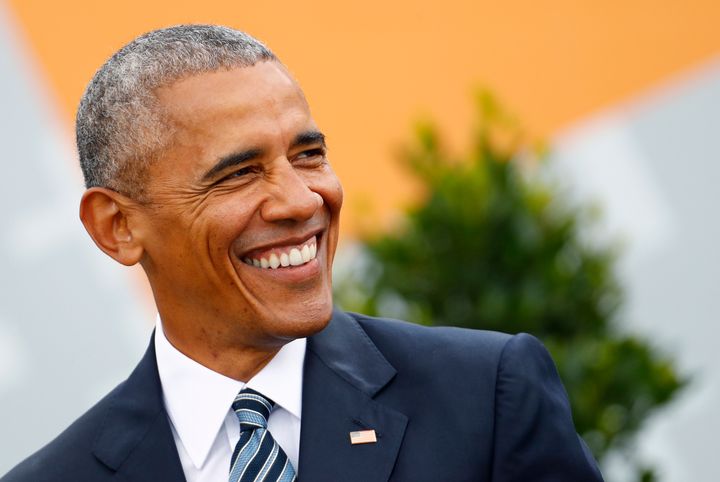
Long before calling Mexican immigrants “criminals” and “rapists,” Trump was a leading proponent of “birtherism,” the racist conspiracy theory that President Barack Obama was not born in the United States and is thus an illegitimate president.
Trump claimed in 2011 to have sent people to Hawaii to investigate whether Obama was really born there. He insisted at the time that the researchers “cannot believe what they are finding.”
Obama ultimately got the better of Trump, releasing his long-form birth certificate and relentlessly mocking the real estate mogul about it at the White House Correspondents’ Association dinner that year.
But Trump continued to insinuate that the president was not born in the country.
“I don’t know where he was born,” Trump said in a speech at the Conservative Political Action Conference in February 2015. (Again, for the record: Obama was born in Hawaii.)
In September, under pressure to clarify his position, Trump finally acknowledged that Obama was indeed born in the United States. But he falsely tried to blame Hillary Clinton for starting the rumors ― and tried to take credit for settling them himself with his racist pressure campaign.
“Hillary Clinton and her campaign of 2008 started the birther controversy,” Trump said. “I finished it.”
10. He treats racial groups as monoliths
Like many racial instigators, Trump often answers accusations of bigotry by loudly protesting that he actually loves the group in question.
But that’s just as uncomfortable to hear, because he’s still treating all the members of the group ― all the individual human beings ― as essentially the same and interchangeable.
Language is telling, here: Virtually every time Trump mentions a minority group, he uses the definite article the, as in “the Hispanics,” “the Muslims” and “the blacks”.
In that sense, Trump’s defensive explanations are of a piece with his slander of minorities. Both rely on essentialising racial and ethnic groups, blurring them into simple, monolithic entities, instead of acknowledging that there’s as much variety among Muslims and Latinos and black people as there is among white people.
How did Trump respond to the outrage last year that followed his characterisation of Mexican immigrants as criminals and rapists?
“I’ll take jobs back from China, I’ll take jobs back from Japan,” Trump said during his visit to the US-Mexico border in July 2015. “The Hispanics are going to get those jobs, and they’re going to love Trump.”
How did Trump respond to critics of his proposal to ban Muslims from entering the US?
“I’m doing good for the Muslims,” Trump told CNN last December. “Many Muslim friends of mine are in agreement with me. They say, ‘Donald, you brought something up to the fore that is so brilliant and so fantastic.’”
Not long before he called for a blanket ban on Muslims entering the country, Trump was proclaiming his affection for “the Muslims,” disagreeing with rival candidate Ben Carson’s claim in September 2015 that being a Muslim should disqualify someone from running for president.
“I love the Muslims. I think they’re great people,” Trump said then, insisting that he would be willing to name a Muslim to his presidential cabinet.
How did Trump respond to the people who called him out for funding an investigation into whether Obama was born in the United States?
“I have a great relationship with the blacks,” Trump said in April 2011. “I’ve always had a great relationship with the blacks.”
Even when Trump has dropped the definite article “the,” his attempts at praising minority groups he has previously slandered have been offensive.
Look no further than the infamous Cinco de Mayo taco bowl tweet:
Former Republican presidential candidate Jeb Bush offered a good summary of everything that was wrong with Trump’s comment.
“It’s like eating a watermelon and saying ‘I love African-Americans,’” Bush quipped.
In an apparent attempt to win favour with black and Latino voters in the final months of the campaign, Trump fell back on his penchant for stereotyping.
At the first presidential debate in September, Trump claimed African-Americans and Latinos in cities were “living in hell” due to the violence and poverty in their neighbourhoods.
The previous month, speaking to an audience of white people, Trump asked “what the hell do [black voters] have to lose” by voting for him. Trump’s treatment of longtime White House correspondent April Ryan during a February press conference left many wondering if Trump assumes all black people are friends with one another.
When Ryan, a black reporter for the American Urban Radio Networks, asked Trump if he would hold meetings with members of the Congressional Black Caucus to help craft his urban development policy, he asked her to handle the introduction.
“Well, I would. I’ll tell you what, do you want to set up the meeting?” Trump asked. “Do you want to set up the meeting? Are they friends of yours?”
“No, I’m just a reporter,” Ryan replied.
11. He trashed Native Americans, too
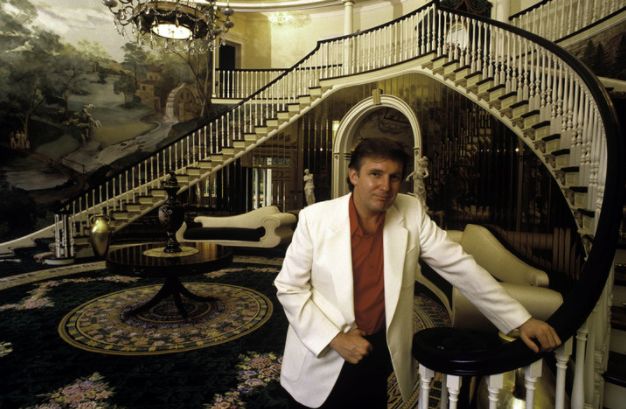
In 1993, Trump wanted to open a casino in Bridgeport, Connecticut, that would compete with one owned by the Mashantucket Pequot Nation, a local Native American tribe.
He told the House subcommittee on Native American Affairs that the Pequots “don’t look like Indians to me... They don’t look like Indians to Indians.”
Trump then elaborated on those remarks, which were unearthed last year in the Hartford Courant, by claiming ― with no evidence ― that the mafia had infiltrated Native American casinos.
12. He encouraged the mob anger that resulted in the wrongful imprisonment of the Central Park Five
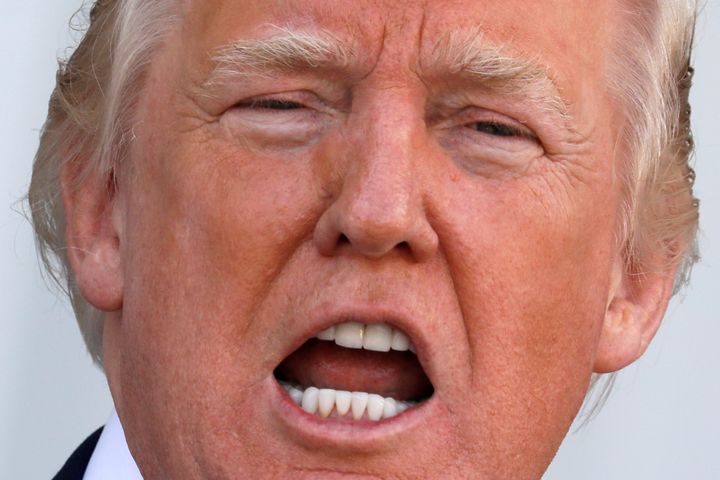
In 1989, Trump took out full-page ads in four New York City-area newspapers calling for the return of the death penalty in New York and the expansion of police authority in response to the infamous case of a woman who was beaten and raped while jogging in Manhattan’s Central Park.
“They should be forced to suffer and, when they kill, they should be executed for their crimes,” Trump wrote, referring to the Central Park attackers and other violent criminals. “I want to hate these murderers and I always will.”
The public outrage over the Central Park jogger rape, at a time when the city was struggling with high crime, led to the wrongful conviction of five teenagers of color known as the Central Park Five.
The men’s convictions were overturned in 2002, after they’d already spent years in prison, when DNA evidence showed they did not commit the crime. Today, their case is considered a cautionary tale about a politicised criminal justice process.
Trump, however, still thinks the men are guilty.
13. He condoned the beating of a Black Lives Matter protester
At a November 2015 campaign rally in Alabama, Trump supporters physically attacked an African-American protester after the man began chanting “Black lives matter”.
Video of the incident shows the assailants kicking the man after he has already fallen to the ground.
The following day, Trump implied that the attackers were justified.
“Maybe [the protester] should have been roughed up,” he mused. “It was absolutely disgusting what he was doing.”
Trump’s dismissive attitude toward the protester is part of a larger, troubling pattern of instigating violence toward protesters at campaign events, where people of colour have attracted especially vicious hostility.
Trump has also indicated he believes the entire Black Lives Matter movement lacks legitimate policy grievances.
He alluded to these views in an interview with The New York Times Magazine where he described Ferguson, Missouri, as one of the most dangerous places in America. The small St. Louis suburb is not even in the top 20 highest-crime municipalities in the country.
14. He called supporters who beat up a homeless Latino man “passionate”

Trump’s racial incitement has already inspired hate crimes. Two brothers arrested in Boston in August 2015 for beating up a homeless Latino man cited Trump’s anti-immigrant message when explaining why they did it.
“Donald Trump was right ― all these illegals need to be deported,” one of the men reportedly told police officers.
Trump did not even bother to distance himself from them. Instead, he suggested that the men were well-intentioned and had simply gotten carried away.
“I will say that people who are following me are very passionate,” Trump said. “They love this country and they want this country to be great again. They are passionate.”
15. He stereotyped Jews and shared an anti-Semitic image created by white supremacists
When Trump addressed the Republican Jewish Coalition last December, he tried to relate to the crowd by invoking the stereotype of Jews as talented and cunning businesspeople.
“I’m a negotiator, like you folks,” Trump told the crowd, touting his 1987 book Trump: The Art of the Deal.
“Is there anyone who doesn’t renegotiate deals in this room?” Trump said. “Perhaps more than any room I’ve spoken to.”
Nor was that the most offensive thing Trump told his Jewish audience. He implied that he had little chance of earning the Jewish Republican group’s support, because his fealty could not be bought with campaign donations.
“You’re not going to support me, because I don’t want your money,” he said. “You want to control your own politician.”
Ironically, Trump has many close Jewish family members. His daughter Ivanka converted to Judaism in 2009 before marrying the real estate mogul Jared Kushner. Trump and Kushner raise their three children in an observant Jewish home.
In July, Trump tweeted an anti-Semitic image that featured a photo of Hillary Clinton over a backdrop of $100 bills with a six-pointed star next to her face and the label “Most Corrupt Candidate Ever!”
“Crooked Hillary - - Makes History!” Trump wrote in the tweet.
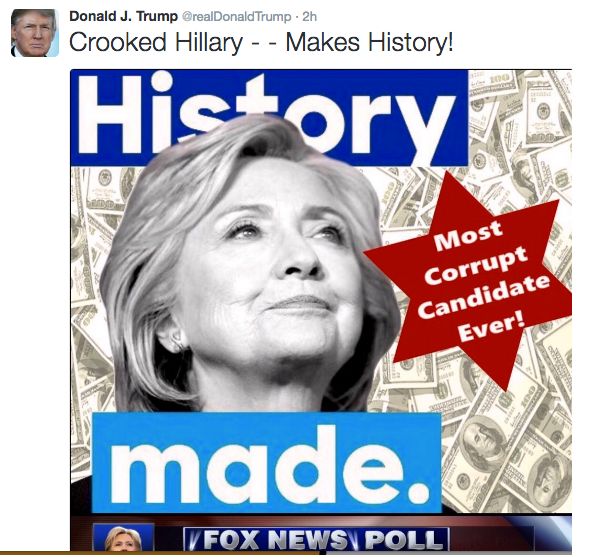
The religious symbol was co-opted by the Nazis during World War II when they forced Jews to sew it onto their clothing. Using the symbol over a pile of money is blatantly anti-Semitic and re-enforces hateful stereotypes of Jewish greed.
But Trump insisted the image was harmless.
“The sheriff’s badge ― which is available under Microsoft’s ‘shapes’ ― fit with the theme of corrupt Hillary and that is why I selected it,” he said in a statement.
Mic, however, discovered that the image was actually created by white supremacists and had appeared on a neo-Nazi forum more than a week before Trump shared it.
Additionally, a watermark on the image led to a Twitter account that regularly tweeted racist and sexist political memes.
16. He treats African-American supporters as tokens to dispel the idea he is racist
At a campaign appearance in California in June, Trump boasted that he had a black supporter in the crowd, saying, “Look at my African-American over here.”
“Look at him,” Trump continued. “Are you the greatest?”
Trump went on to imply that the media conceals his popularity among black voters by not covering the crowd more attentively.
“We have tremendous African-American support,” he said. “The reason is I’m going to bring jobs back to our country.”
Ultimately, Trump won just 8 percent of the African-American vote, according to the NBC News exit poll.
It may not be surprising that Trump brought so much racial animus into the 2016 election cycle, given his family history.
His father, Fred Trump, was a target of folk singer Woody Guthrie’s lyrics after Guthrie lived for two years in a building owned by Trump père: “I suppose / Old Man Trump knows / Just how much / Racial hate / He stirred up / In the bloodpot of human hearts.”
And last fall, a news report from 1927 surfaced on the site Boing Boing, revealing that Fred Trump was arrested that year following a KKK riot in Queens.
It’s not clear exactly what the elder Trump was doing there or what role he may have played in the riot.
Donald Trump, for his part, has categorically denied (except when he’s ambiguously denied) that anything of the sort ever happened.